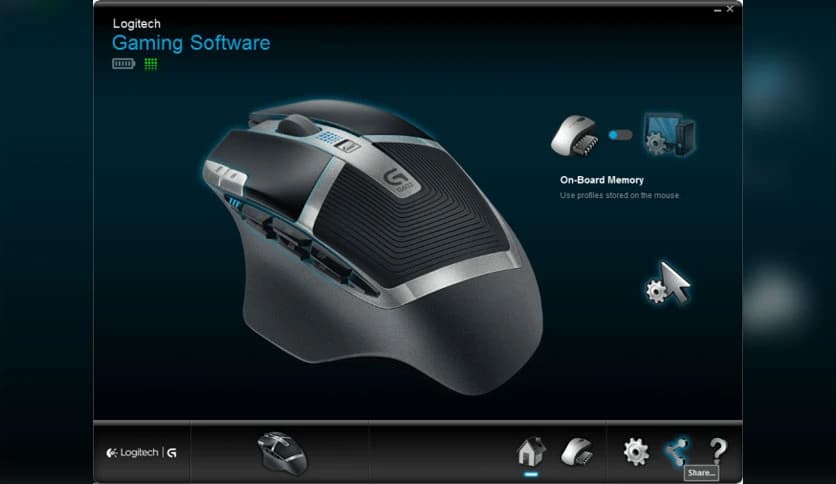In the sphere of digital peripherals, the term "Onboard Memory Manager" evokes visions of customizable efficiency, streamlined workflows, and enhanced gaming experiences. For Logitech users, this feature serves as a gateway to unlocking the potential of their devices, allowing for a tailored interaction that adjusts to the unique preferences of the user. This article endeavors to elucidate the processes and functionalities of Logitech’s Onboard Memory Manager, providing you with an arsenal of techniques to wield this tool like a seasoned professional.
At its core, the Onboard Memory Manager is an ingenious utility that permits users to store profiles and macros directly on their Logitech devices. This means that whether you are traversing digital landscapes in your favorite game or unleashing productivity in your day-to-day tasks, your personalized settings can travel with you, unencumbered by the need for a specific machine. The proclivity for personalization is at the forefront of its design, empowering users to create an experience tailored to their exacting standards.
1. Understanding the Software
To embark on your journey with the Onboard Memory Manager, it begins with understanding the software itself. This powerful application, found in the Logitech Gaming Software or Logitech G HUB, is where the magic happens. Here, you will encounter an intuitive interface, which allows for the seamless navigation of profiles, key bindings, and macro configurations. Take the time to familiarize yourself with its layout — the more adeptly you navigate the software, the more proficiently you will utilize its capabilities.
2. Creating and Managing Profiles
Profiles are the cornerstone of the Onboard Memory Manager. These profiles can be customized for different applications or games, facilitating a fluid transition between various tasks. To create a new profile, simply click on the 'Add New Profile' button within the software. You can assign a name and icon that resonate with the application’s purpose. This minor attention to detail enhances both organization and user experience.
Managing profiles entails not only customization but also understanding triggers. You can set profiles to change automatically based on the active application, ensuring that your setup is always optimal for the task at hand. This automation is particularly advantageous during competitive gaming, where milliseconds can spell the difference between triumph and defeat.
3. Key Bindings and Macros
In the realm of effective device management, key bindings and macros emerge as paramount tools. The Onboard Memory Manager allows you to assign specific functions to each key, permitting a level of efficiency that can drastically improve your responsiveness during gameplay or intricate workflows. For instance, setting a single key to execute a series of commands can save precious time and maintain the rhythm of your operations.
To create a macro, navigate to the macro section in the software and click ‘Create New Macro.’ This is where you can record sequences of actions performed on your device. Remember to engage in a thoughtful selection of commands; the beauty of macros lies in their capacity to simplify complex processes. With practice, you’ll discover the capability to execute even the most convoluted commands with a mere keystroke.
4. Understanding DPI Settings
DPI, or dots per inch, is another critical factor in maximizing your interaction with Logitech devices. The Onboard Memory Manager allows users to configure DPI settings, tailoring sensitivity levels for a comprehensive control experience. High DPI settings can facilitate swift movements, advantageous in fast-paced gaming scenarios, while lower settings might be preferable for more precise control, such as in graphic design or detailed editing tasks.
Experimentation is key when determining the appropriate DPI settings. The utility provides distinct profiles for different DPI levels, enabling you to switch between them instantaneously. This adaptability is indispensable for gamers who engage in both close-quarters combat and long-range sniping, as each scenario demands varying degrees of sensitivity.
5. Using LED Customization
Beyond mere functional customization, Logitech's Onboard Memory Manager also permits users to exploit LED lighting effects. RGB lighting can enhance not only the aesthetic appeal of your setup but also serve practical purposes — for instance, indicating different profiles or modes through color coding. Understanding how to navigate this feature can elevate your overall experience to a more immersive level.
To customize the lighting, delve into the lighting settings within the Onboard Memory Manager. Here, you can choose static colors, dynamic effects, or even synchronize lights between multiple devices. Such visual stimuli can provide contextual indicators that keep you well-informed during fast-paced or multi-tasking scenarios.
6. Syncing Across Devices
Another remarkable feature of the Onboard Memory Manager is its ability to sync your settings across multiple Logitech devices. This synchronicity is invaluable for users who operate with several peripherals, enabling a seamless transition and a harmonized setup. An individual’s preferences can be imported and shared, running the risk of diminishing their unique flair, but ultimately fostering a harmonious workplace or gaming environment.
To enable this feature, ensure that you are utilizing the same Logitech account across devices. This universality means that once you invest time into crafting profiles, macros, and configurations, your investment will yield dividends across your entire Logitech ecosystem.
Conclusion
The Onboard Memory Manager stands as a testament to the intersection of technology and user personalization. By mastering its functionalities, you imbue your Logitech devices with a bespoke touch that transcends the ordinary experience, facilitating unprecedented efficiency and enhanced performance. Whether you are an avid gamer or a productivity enthusiast, wielding the Onboard Memory Manager like a pro can revolutionize your engagement with technology. So embrace the intricacies of this comprehensive tool and transform your interactions into something extraordinary.



















Responses (0 )